Annex B.3 Examples of recommendations for the spacing and depth of investigations
(1) The following spacing of investigation points should be used as guidance:
•for high-rise and industrial structures, a grid pattern with points at 15 m to 40 m distance;
•for large-area structures, a grid pattern with points at not more than 60 m distance;
•for linear structures (roads, railways, channels, pipelines, dikes, tunnels, retaining walls), a spacing of 20 m to 200 m;
•for special structures (e.g. bridges, stacks, machinery foundations), two to six investigation points per foundation;
•for dams and weirs, 25 m to 75 m distance, along vertical sections.
(2) For the investigation depth za the following values should be used as guidance. (The reference level for za is the lowest point of the foundation of the structure or structural element, or the excavation base.) Where more than one alternative is specified for establishing za, the one which yields the largest value should be applied.
(5) For high-rise structures and civil engineering projects, the larger value of the following conditions should be applied:
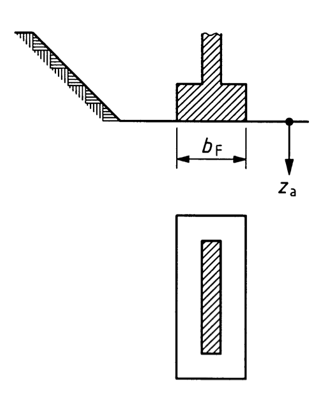
za ≥ 6 m;
za ≥ 3,0 bF.
where bF is the smaller side length of the foundation.
(6) For raft foundations and structures with several foundation elements whose effects in deeper strata are superimposed on each other:

za ≥ 1,5·bB
where bB is the smaller side of the structure.
(5) Embankments and cuttings, the larger value of the following conditions should be met:

a) For damns |
b) For cuttings |
0,8h < za < 1,2h
za ≥1 6 m
where h is the embankment height.
|
za ≥ 2,0 m
za ≥ 0,4h
where h is the dam height or depth of cutting. |

a) For roads and airfields |
b) For trenches and pipelines, the larger value of: |
za ≥ 2 m below the proposed formation level. |
za ≥ 2 m below the invert level;
za ≥ 1,5 bAh
where bAh is the width of excavation. |
(9) For small tunnels and caverns:

bAb < za < 2,0bAb
where bAb is the width of excavation.
The groundwater conditions described in (10) b) should also be taken into account.
(10) Excavations a) Where the piezometric surface and the ground- water tables are below the excavation base, the larger value of the following conditions should be met:
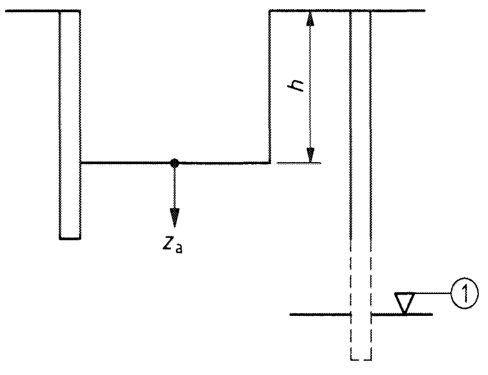
za ≥ 0,4h
za ≥ (t + 2,0) m
where: t is the embedded length of the support; and h is the excavation depth.
Where the piezometric surface and the ground- water tables are above the excavation base, the larger value of the following conditions should be met:
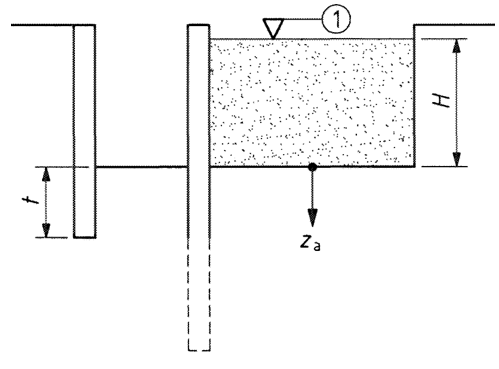
za ≥ (1,0×H + 2,0) m
za ≥ (t + 2,0) m
where H is the height of the groundwater level above the excavation base; and t is the embedded length of the support.
(12) For cut-off walls:
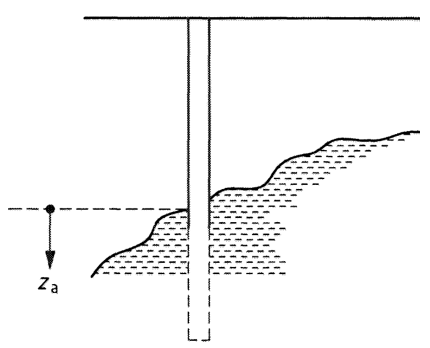
za ≥ 2 m
below the surface of the stratum impermeable to groundwater.
(13) For piles the following three conditions should be met:
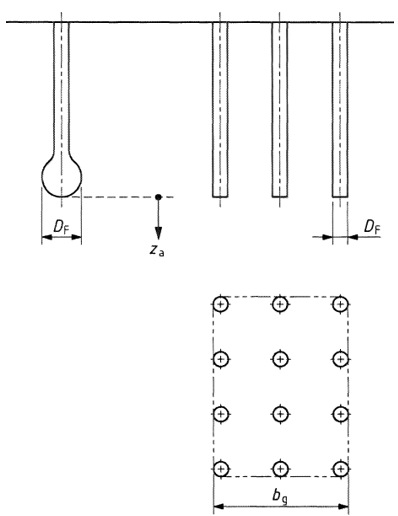
za ≥ 1,0bg
za ≥ 5,0 m
za ≥ 3DF
where DF is the pile base diameter; and bg is the smaller side of the rectangle circum- scribing the group of piles forming the foundation at the level of the pile base.